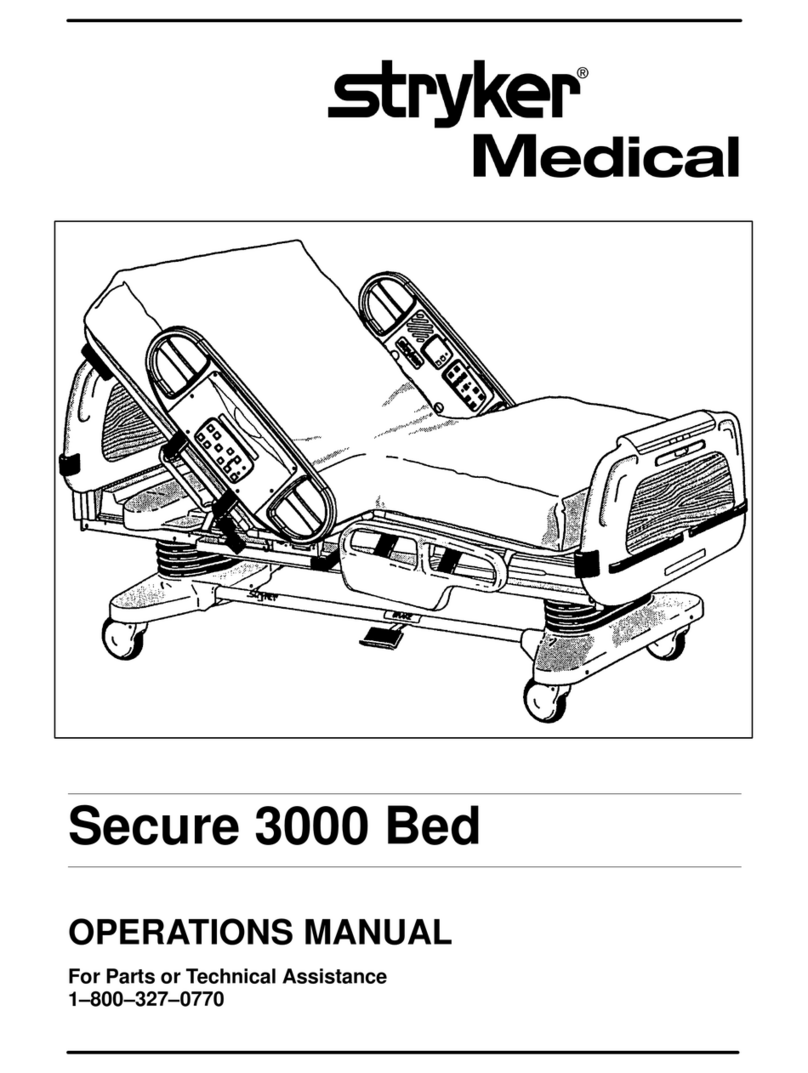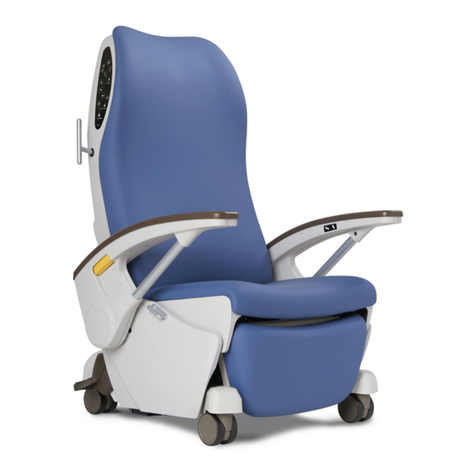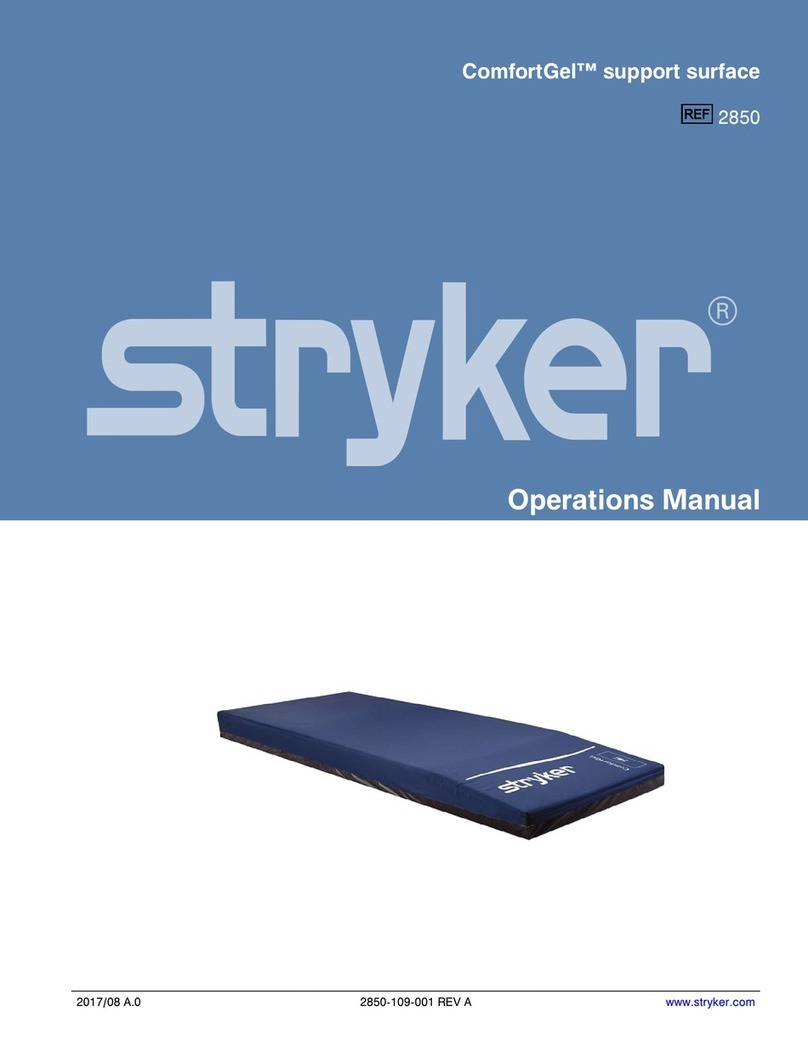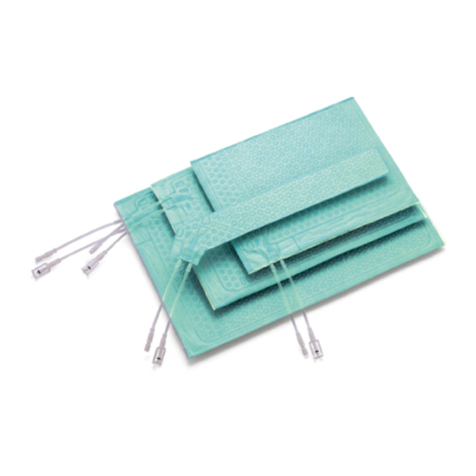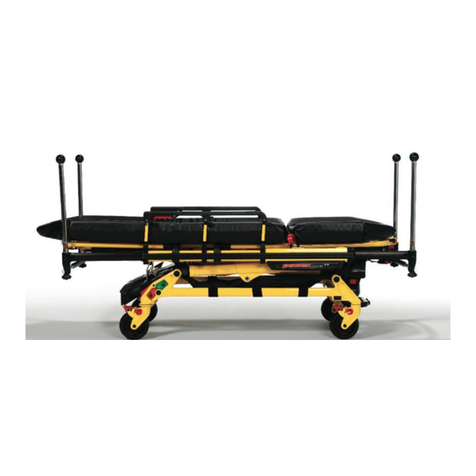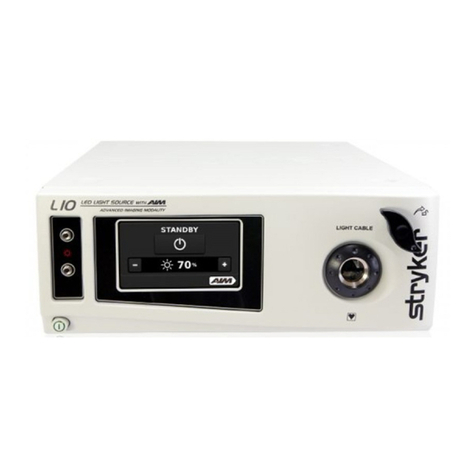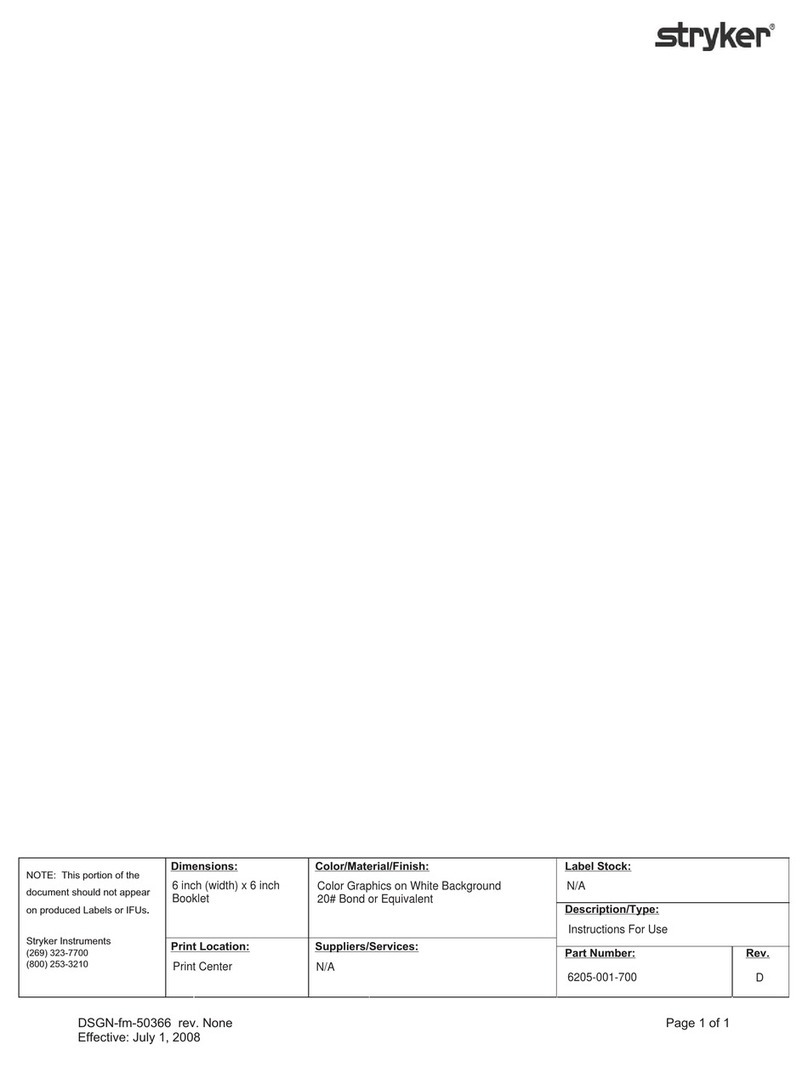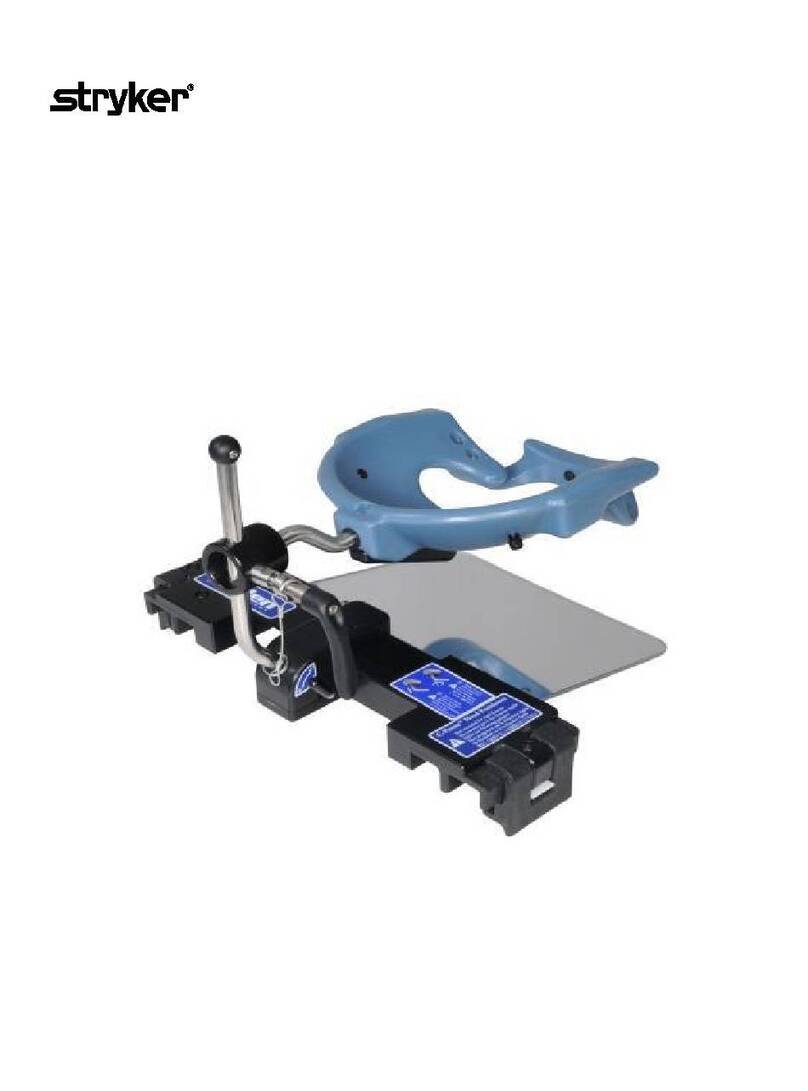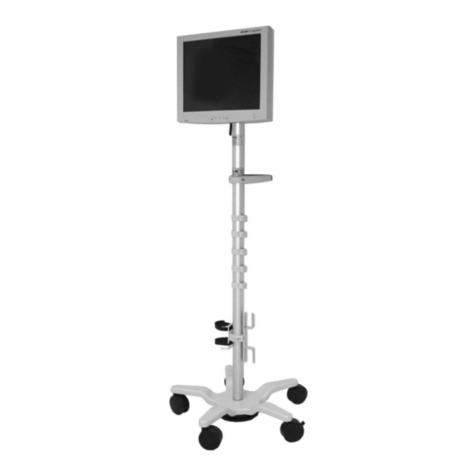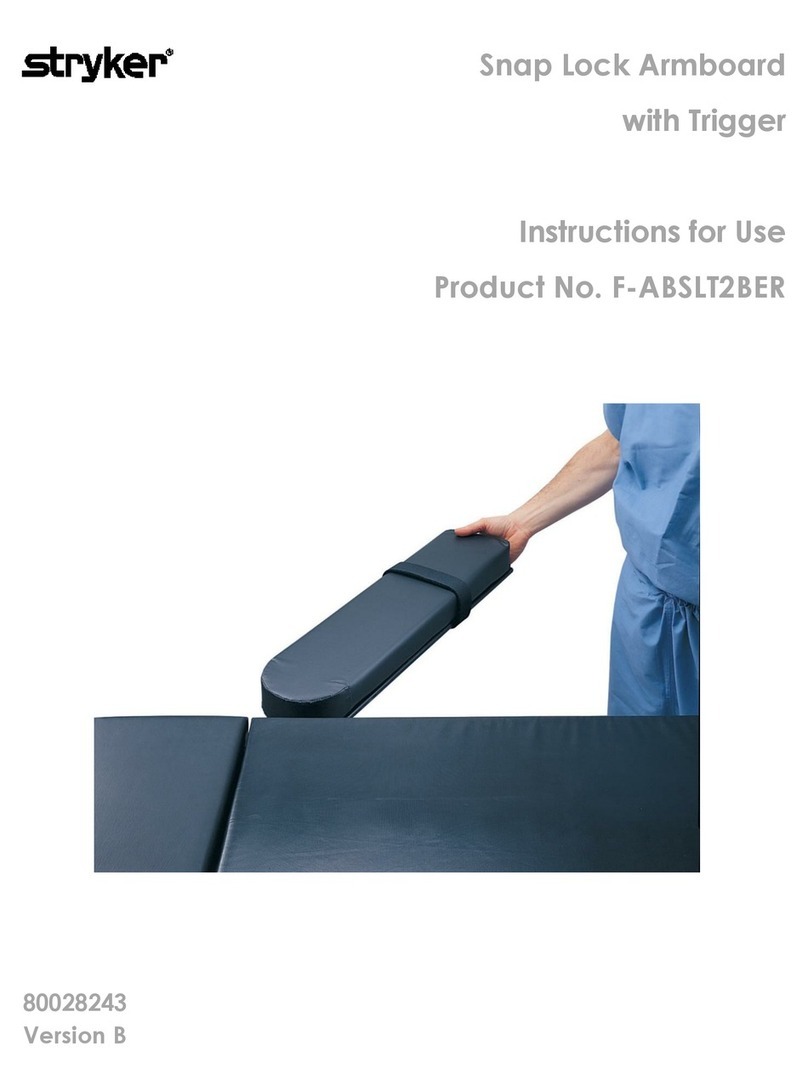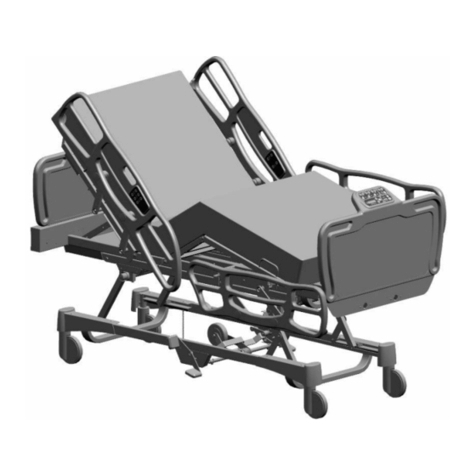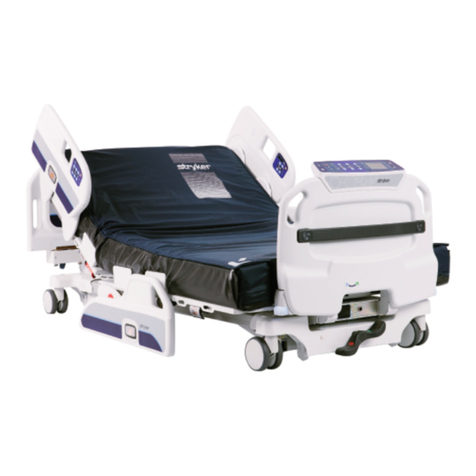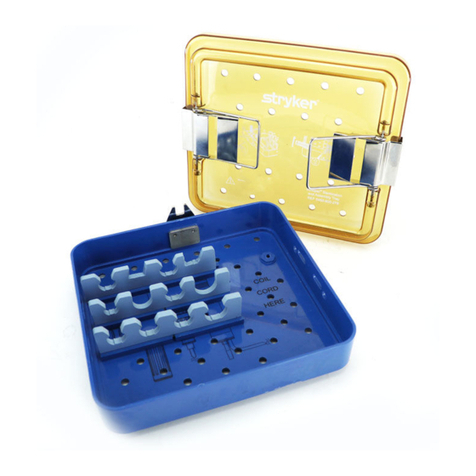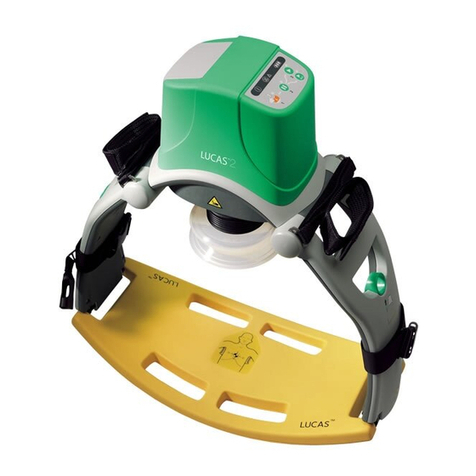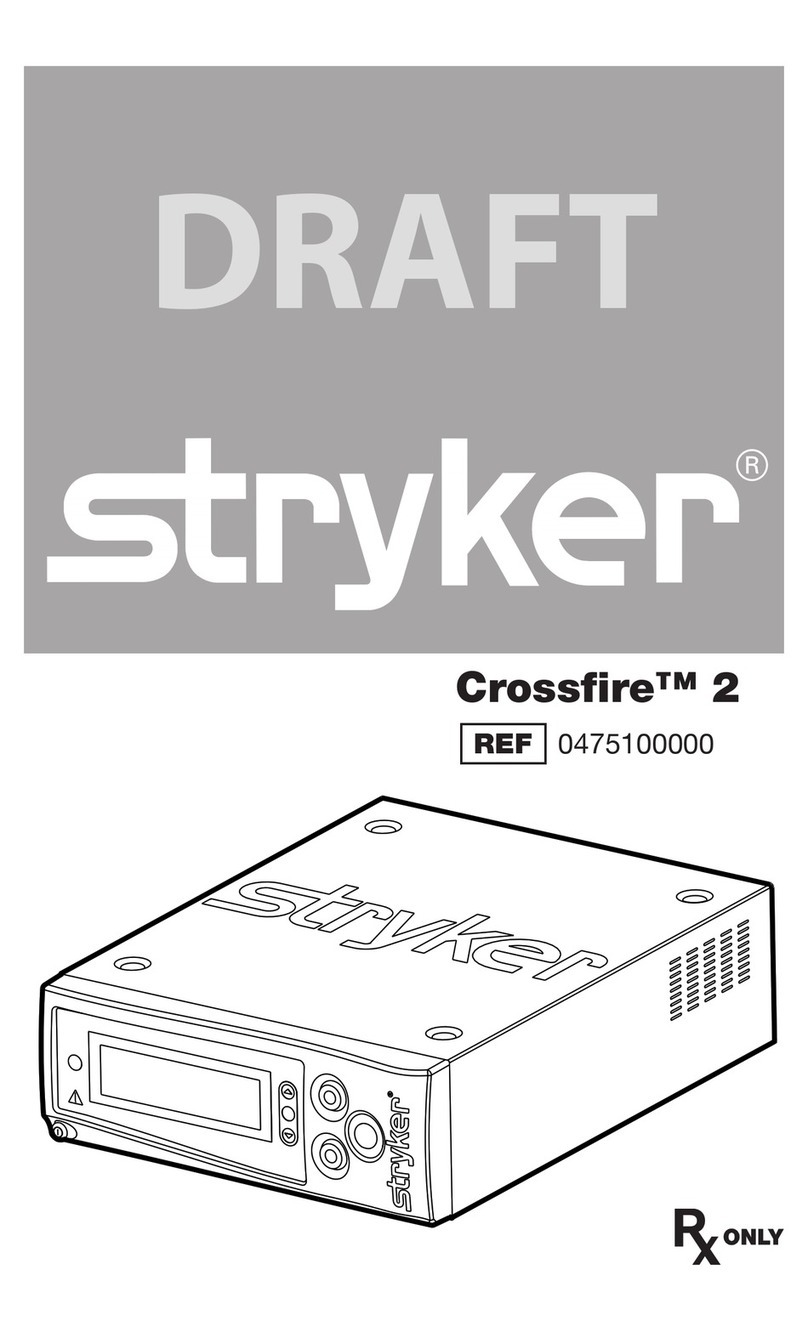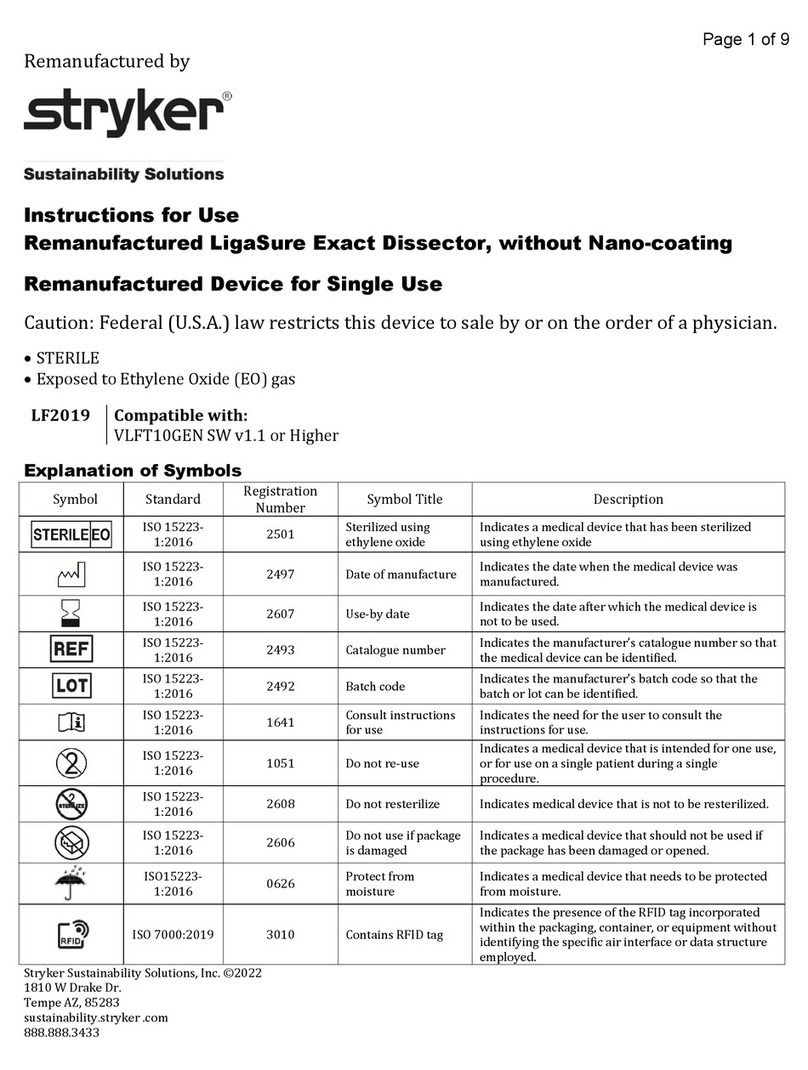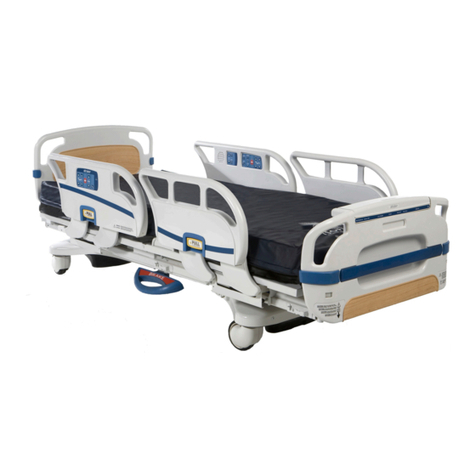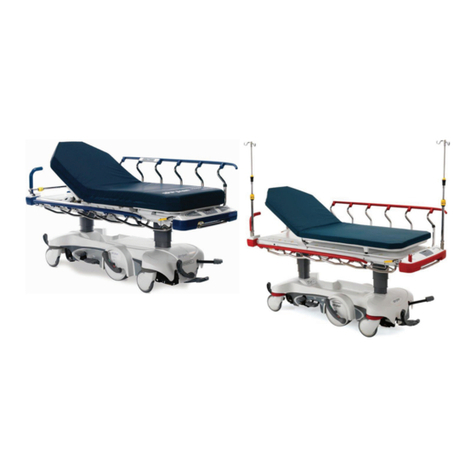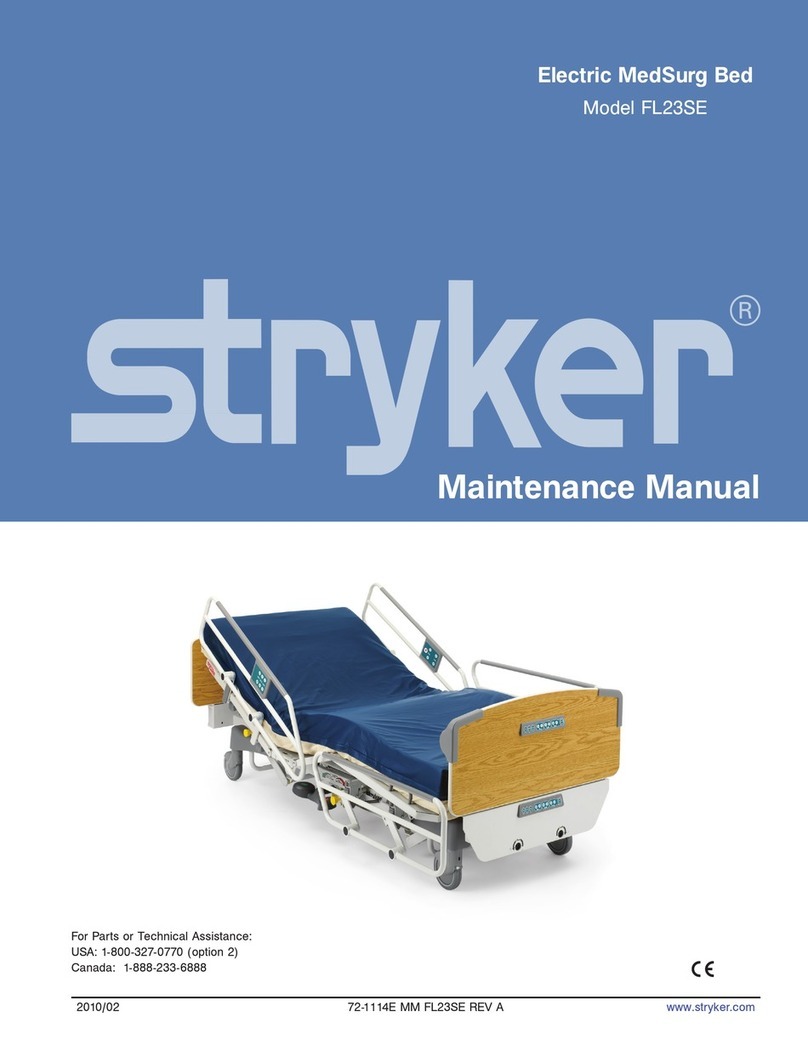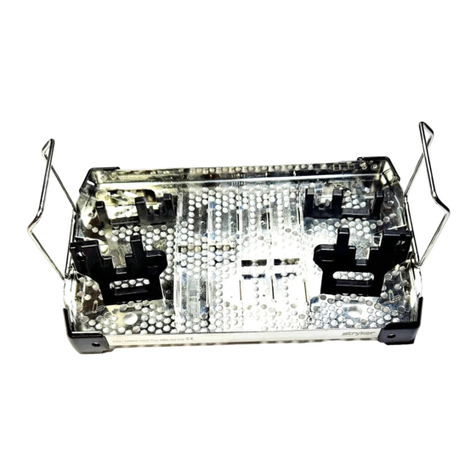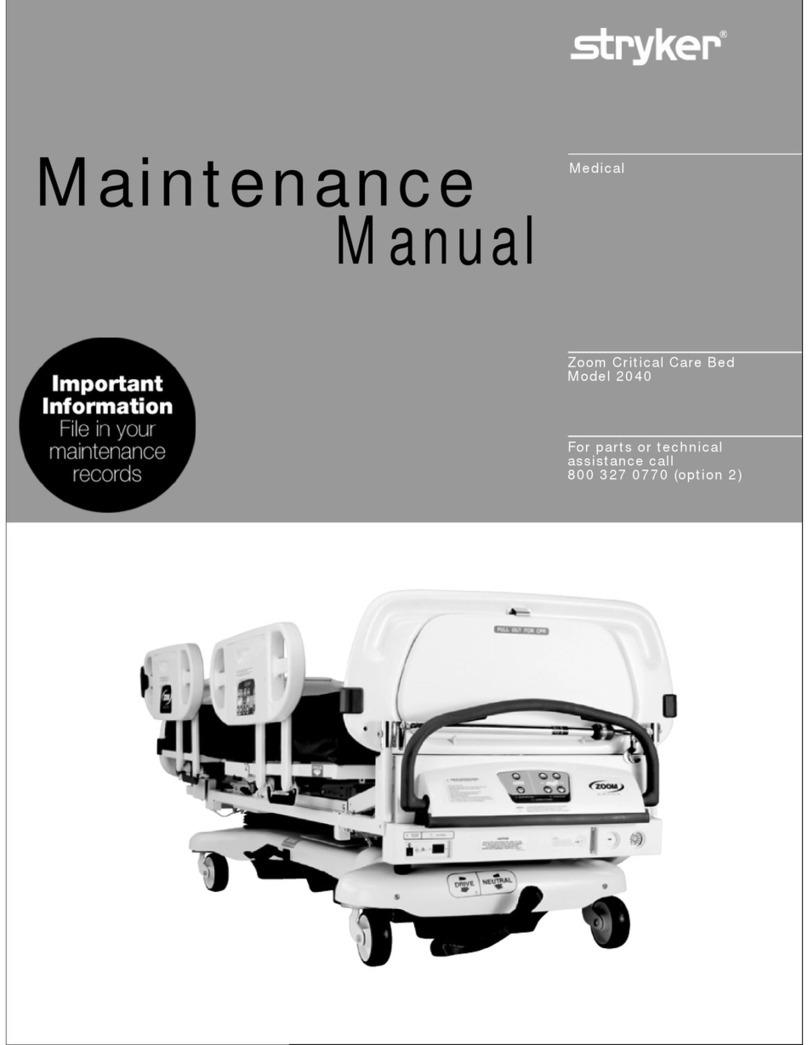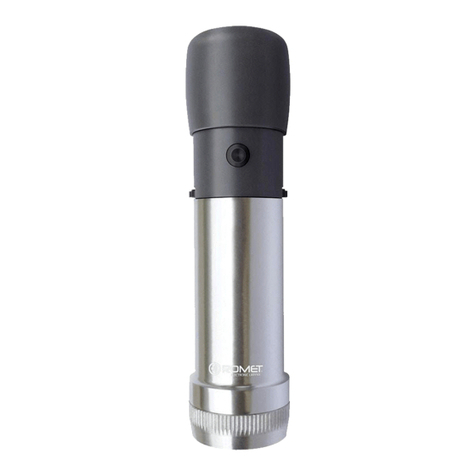
www.stryker.com 3006 -109 -101 REV A 3
Table of Contents
Symbols and Definitions .....................................................................5
Warning/Caution/Note Definition ............................................................6
Introduction ..............................................................................7
Intended Use – Stryker S3™ ..............................................................7
Intended Use – iBed®Wireless with iBed®Awareness............................................7
Specifications .........................................................................7
Mattress Specifications ..................................................................8
Environmental Conditions .................................................................8
Product Illustration ......................................................................9
Contact Information ....................................................................10
Serial Number Location .................................................................10
Summary of Safety Precautions ..............................................................11
iBed®Awareness Option ................................................................ 13
iBed®Wireless Option ..................................................................13
115V Option .........................................................................14
Setup Procedures.........................................................................15
iBed®Wireless Option ..................................................................16
Base Operation Guide .....................................................................17
Brake Pedal Operation.................................................................. 17
Steer Pedal Operation .................................................................. 17
Litter Operation Guide .....................................................................18
CPR Emergency Release ................................................................18
Foot Prop Usage ......................................................................18
Fracture Frame Usage ..................................................................18
Foley Bag Hooks Usage .................................................................18
Positioning Siderails....................................................................19
Control Panel Lights....................................................................19
Operating I.V. Poles ....................................................................20
Night Light Usage .....................................................................21
Nurse Call Backup Battery (Optional) .......................................................21
1/4” Nurse Call Port (Optional) ............................................................21
Using the 115 Volt Outlet (Optional) ........................................................21
CPR Board Usage (Optional Equipment) .....................................................21
Siderail Operation Guide....................................................................22
Nurse Control Functions (Outside Siderail) ...................................................22
Patient Control Functions without Optional Smart TV (Inside Siderail) ...............................23
Patient Control Functions with Optional Smart TV (Inside Siderail)..................................24
Patient TV Channel Control Functions with Optional Smart TV (Inside Siderail) . . . . . . . . . . . . . . . . . . . . . . . . 25
Footboard Operation Guide..................................................................26
Intended Use .........................................................................26
Footboard Control Panel Buttons ..........................................................26
Footboard Control Panel Functions.........................................................27
LED Indicators: Footboard ...............................................................29
Display Screens.......................................................................31
